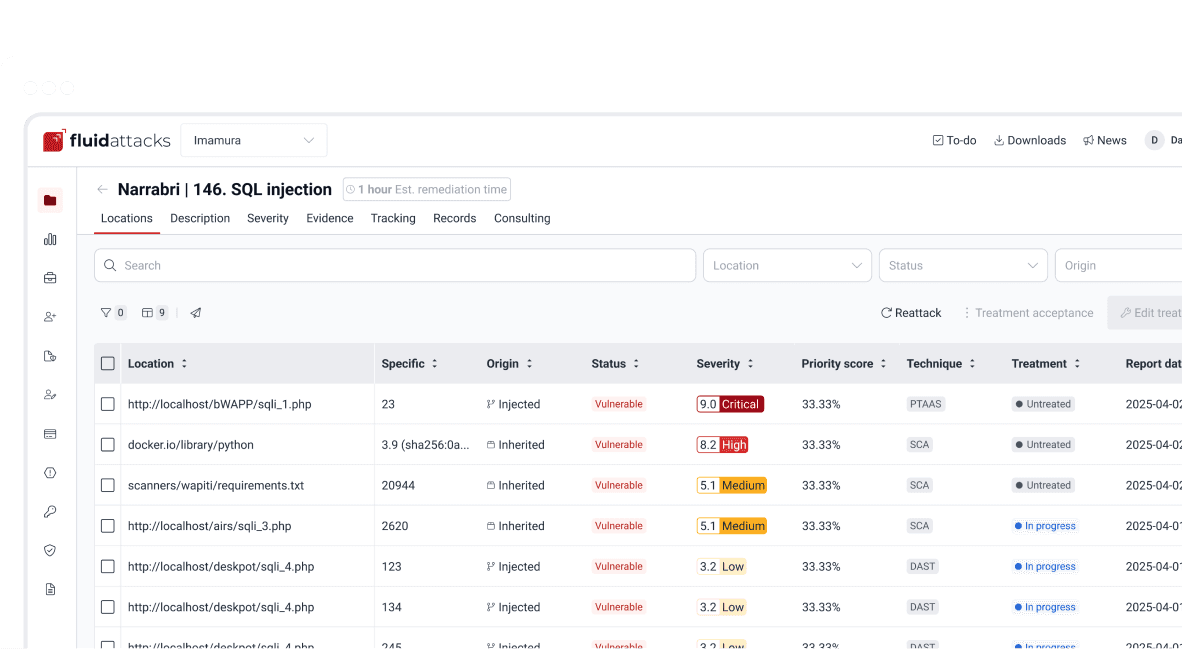Attacks
The treacherous POODLE: How does the SSL fallback's works

Security analyst
Updated
May 2, 2018
6 min
A gas vendor, each week receives gas, which he stores in pipes and discretely refills them with water. Each day sells this gas to his clients, unbeknown to an "auditor" in black robes - aka Poodle - paying attention to this situation. One day the "auditor" undercover, tells the vendor he will only offer gas with less octanage, thus his pipes should met certain old requirements, ignorant of the situation he downgrades it’s pipes standards until the "auditor" agrees on it.
Next day, the "auditor" goes to the station, disguised as a client and ask the vendor to refill his car, next he reveals himself telling the vendor that he knows what he is doing plus that he has outdated pipes which represent a threat, but it won’t talk if he pays him a commision for each sell.
Following act, the auditor was just a regular dude impersonating someone else. And the vendor in it’s infortune, kept an old standard storage pipes without realizing the harm it could make to it’s clients or to himself.
I hope that doesn’t end in the worst analogy in human history, moreover i hope it helps to understand certain technicisms we will see later. But please, bare in mind that i’m not an expert on oil industry.

Black poodle.
Technical introduction
The Padding Oracle On Downgraded Legacy Encryption SSL 3.0 (POODLE v3), it is a protocol vulnerability on Secure Socket Layer (SSL 3.0), which can make any *Transport Layer Secure (TLS)*` version to fallback to `(SSL 3.0) plus it takes advantage on weak encryption using a mechanism to check message authenticity using Cipher Block Chaining Message Authentication Code (CBC-MAC), allowing an attacker to steal cookies from an user on the same network.
Discovered on September, 2014, by Bodo Möller , Thai Duong and Krzysztof Kotowicz from the Google security team.
If you are not aware what this terms are check the BEAST article, the (CBC-MAC) will be explained here, don’t worry.
Petting the POODLE
Have you clean yourself from that awful analogy? From now on, guess you will see why i wrote it.
Whenever client and server are going to start an exchange using SSL/TLS, they use a protocol called Handshake, a process that is explicitly to settle a ground of standards between the client and the server, where both agrees which SSL/TLS version protocol will be used, the cryptography method used, key exchange, plus more. All with the final intention to send messages while speaking on the same language.
But why does this matter? Let’s take a look at that process step by step:

Handshake step by step.
Although i will not describe each step in depth, it is necessary to show the overall process, to understand how does the downgrading process is and where the attack finally lands.
In simple terms, the attack relies on the fact, that whenever an attempt to establish a secure connection, it fails (Step 1 to Step 2), then the server will fallback to an older protocol.
Remeber the gas vendor downgrading it’s pipes until the "auditor" waits till he has that old pipes standard? Good…
Notice that whilst TLS is the successor of SSL, SSL 3.0 has more precedence than TLS 1.0 - 1.2, mostly to guarantee an smooth user experience and interoperability across legacy machines, thought, it was obsolete and insecure. Moreover the attack will even work if both have TLS.
Well then, let’s see how does the downgrade works. If in the first step, the client offers it’s highest version of the protocol, let’s say, TLS 1.2, the server, while not having such version, will negotiate the usage of TLS 1.0 by downgrading it’s own protocol version, but notice, that such offering can be repeated several times as long it fails.
Quite like this:

Protocol downgrading.
Hope you didn’t miss the CBC-MAC under the protocol version, because this is the most interesting part of this attack.
The reason behind the fallback advantage, is to force the client and the server to use weak encryption. It won’t reveal the key, but it will allow an attacker to eventually recreate cookies/session parameters by intercepting the downgraded exchange channel.
How does this works in SSL 3.0? Well, CBC works as expected, just with one subtle difference, the MAC is done to check the authenticity of a message, works like a charm on fixed-length messages. But! not on variable-length messages as the padding will fail to be fully verified when decrypting.
Remeber from that stupid analogy the gas vendor refilling it’s gas pipes with water? Well, that’s what the padding is, although the CBC-MAC algorithm won’t have any economic advantage, it just tries to handle variable-length messages, by adding extra random characters to met the needed multiple block-length, to get 8 or 16 bytes blocks depending on the algorithm (DES, 3DES, AES). Taking advantage on this is ofently called Padding Oracle Attack.
So, here is where the version downgrade lands. But let’s see it in action with this simple example, i’m gonna use 8-bytes blocks to make it short.
Let’s suppose we have already intercepted a client-server communication and we have forced the use of SSL 3.0, now we are going to reveal the encrypted messages while both are at the last step of the handshake.
Without too much details, the client sends a request to the server:
Http request.
A message request from the client which is going to be encrypted with DES using CBC-MAC mode. First at all, the MAC of the message should be computed:
IVis full of 0’sXORwith each block of plaintext

Compute MAC.
And append it to the end of the message, then check if the length of the message is a multiple of 8 (block-size), if not, add random padding characters at the end until it hits a multiple of the block-size and the final byte becomes the length of the padding, which output is like this:
Padded message example with MAC code.
_____
⚠️ Note: I will represent the random padding characters by "-", don’t get confused.
_____
Then the process of encryption with CBC as described in the BEAST article. Which output is:

Output of encrypted message.
The message is then sent to the server, and now consider the decryption process on the server:

CBC decryption.
Taking on account that the exchange is being made with SSL 3.0 and the fact that when a CBC encryption algorithm is used, SSL 3.0 does not cover padding with MAC. Which means, that the mechanism used to verify the authenticity of a message won’t be able to fully verify it while decrypting it.
Did you spot something weird with this mechanism, but besides than the stated flaw? No? Perhaps on encryption? Or before?
Well, if you didn’t, here is a clue: Authentication should be done after encryption, NOT before. The Authenticate-then-Encrypt poses a problem, which by that time wasn’t that evident.

SSL blames SSL.
So, to process each block of the ciphertext, denoted as C, the recipient determines each block of the plaintext, denoted as P, using the following mathematical formula:
Pi = Dk(Ci) XOR Ci-1
Where C0 is the
Initialization Vector (IV)C ranges from C1 to Cn.
P ranges from P1 to Pn.
Dk the block-cipher decryption using per-connection key K or
This in simple words means, that each current block is XORed with the previous block, then checks and removes the padding at the end, and finally checks and removes the MAC.
So how does the attack use decryption to get the plaintext without the key?
Considering our padding block
[------7], Cn.And the block we want to decrypt, Ci.
Replace Cn by Ci, usually this block modification will be rejected, but only once on 256 request, it won’t, the attacker will conclude that the last byte of Cn-1 XORed with Ci will yield, 7.
Mathematically speaking Dk(Ci)[7] XOR Cn-1[7] = 7
As SSL 3.0 doesn’t care for the rest of bytes on the padding block, less for the block-length, it will accept it. And thus that Pi[7] = 7 XOR Cn-1[7] XOR Ci-1 a calculation which will reveal the bytes unknown on the block the attacker wanted.
This can be seem like a duplication of certain block on the stream, which will replace the last block, thus, the last byte will be XORed with the last byte of the previous block, resulting in 7. This is possible as the block is on the same stream, thus when the message authentication is performed it will take it as a valid block.
As stated before, this trick will be performed almost 256 request until it’s accepted, each fail means the last byte has to be shifted.
Plus it has to be done byte by byte on the cipher stream or at least, in each byte of the block the attacker wants to know.
Requirements
Although the attack seems quite similar with the BEAST attack, it relies entirely on a flaw on SSL/TLS protocol.
The only requirements are:
Run a
Man-In-The-Middle Attackagainst the victim.Perform the Downgrade if
TLSis used.
Once an attacker has done it, it can steal the cookies/session from a user.
Any patch?
Well, there is a funny quote by the researchers:
disabling the SSL 3.0 protocol in the client or in the server (or both) will completely avoid it. If either side supports only SSL 3.0, then all hope is gone, and a serious update required to avoid insecure encryption.
But there was and still exist an initiative to disable ssl from all browsers and on any servers using it.
Get started with Fluid Attacks' PTaaS right now
Other posts















